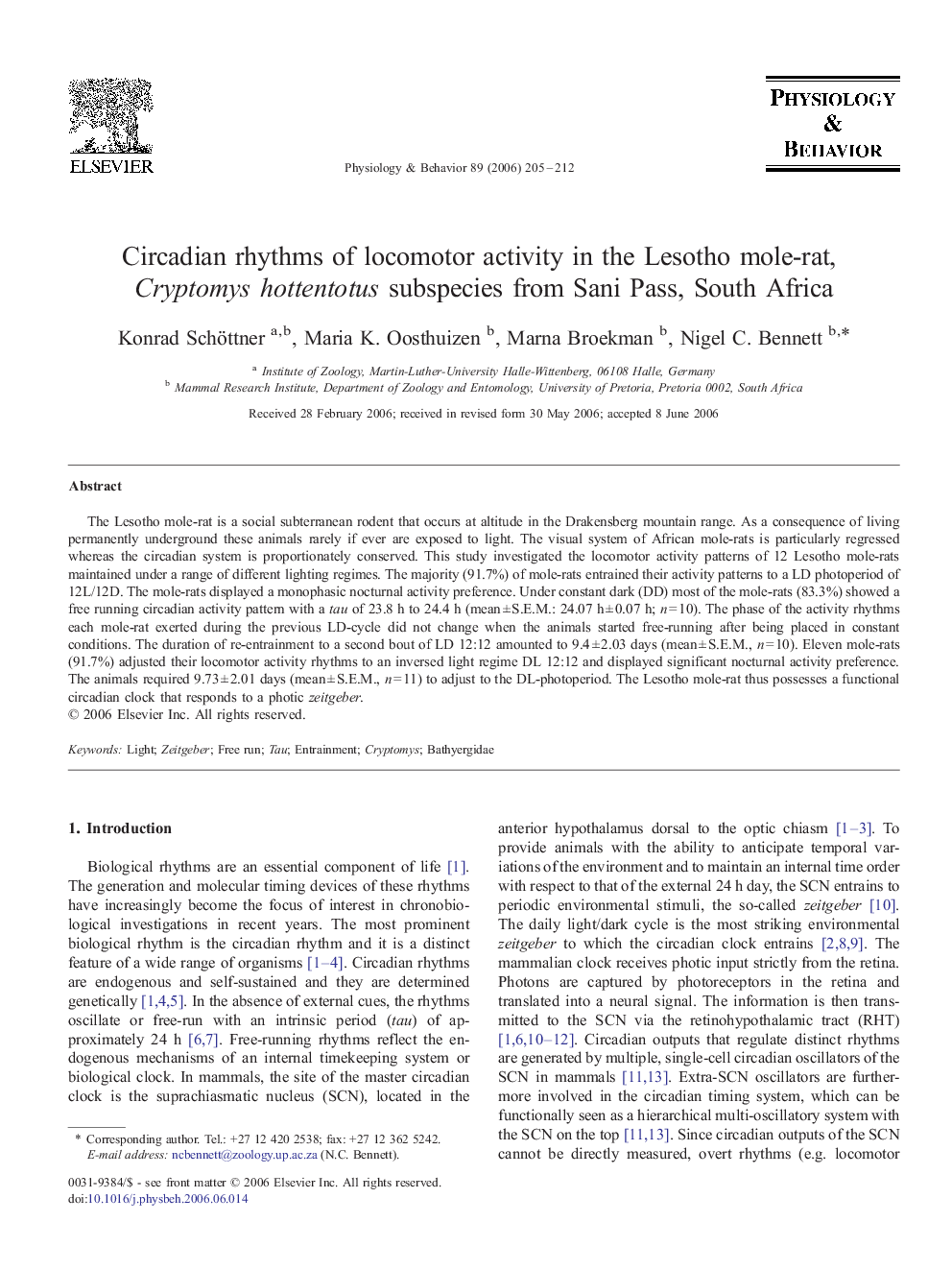| کد مقاله | کد نشریه | سال انتشار | مقاله انگلیسی | نسخه تمام متن |
|---|---|---|---|---|
| 2846286 | 1166415 | 2006 | 8 صفحه PDF | دانلود رایگان |

The Lesotho mole-rat is a social subterranean rodent that occurs at altitude in the Drakensberg mountain range. As a consequence of living permanently underground these animals rarely if ever are exposed to light. The visual system of African mole-rats is particularly regressed whereas the circadian system is proportionately conserved. This study investigated the locomotor activity patterns of 12 Lesotho mole-rats maintained under a range of different lighting regimes. The majority (91.7%) of mole-rats entrained their activity patterns to a LD photoperiod of 12L/12D. The mole-rats displayed a monophasic nocturnal activity preference. Under constant dark (DD) most of the mole-rats (83.3%) showed a free running circadian activity pattern with a tau of 23.8 h to 24.4 h (mean ± S.E.M.: 24.07 h ± 0.07 h; n = 10). The phase of the activity rhythms each mole-rat exerted during the previous LD-cycle did not change when the animals started free-running after being placed in constant conditions. The duration of re-entrainment to a second bout of LD 12:12 amounted to 9.4 ± 2.03 days (mean ± S.E.M., n = 10). Eleven mole-rats (91.7%) adjusted their locomotor activity rhythms to an inversed light regime DL 12:12 and displayed significant nocturnal activity preference. The animals required 9.73 ± 2.01 days (mean ± S.E.M., n = 11) to adjust to the DL-photoperiod. The Lesotho mole-rat thus possesses a functional circadian clock that responds to a photic zeitgeber.
Journal: Physiology & Behavior - Volume 89, Issue 2, 30 September 2006, Pages 205–212